Jim Gain’s series, “Learn 100 Common Valley Birds” may be the best introduction anywhere to the common birds of the San Joaquin Valley. An accomplished naturalist and superb photographer, Jim offers the beginning birder quick and easy lessons for identifying and enjoying the common birds around us. We’ve previously published complete versions of each previous bird in the series; below, we offer quick looks at numbers 62 through 67 and links to each complete segment. As always, we urge our readers to review Jim’s entire website, Reflections of the Natural World, for an excursion into nature that will dazzle your eyes and introduce you to the infinite delights and beauty of the natural world around us.
Common Yellowthroat #62/100
One of the more beautiful birds of the Valley’s wetlands, the Common Yellowthroat is often overlooked because it favors the thick tules and cattails of local marshes. As with many species, males are more brightly colored than females and easily identified by their black masks and yellow throats. Their distinctive “witchety, witchety, witchety,” song is often heard before these small birds are seen.
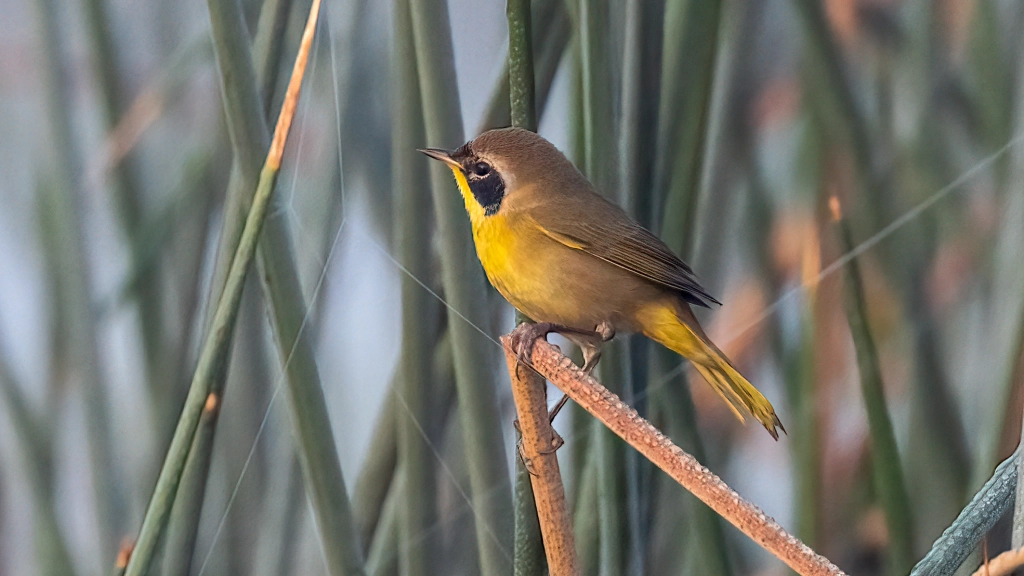
See Jim’s full description and photos here.
Western Bluebird #63/100
The “Bluebird of Happiness” isn’t just a fanciful imagining. Here in the San Joaquin Valley, the Western Bluebird, with its bright blue upperparts and rosy breast can be seen most anywhere by the alert observer who knows what to look for. Relatively small compared to many other local birds, Western Bluebirds always bring joy to those who encounter them. They range widely throughout the Valley and may be seen almost any time in most rural and urban settings.
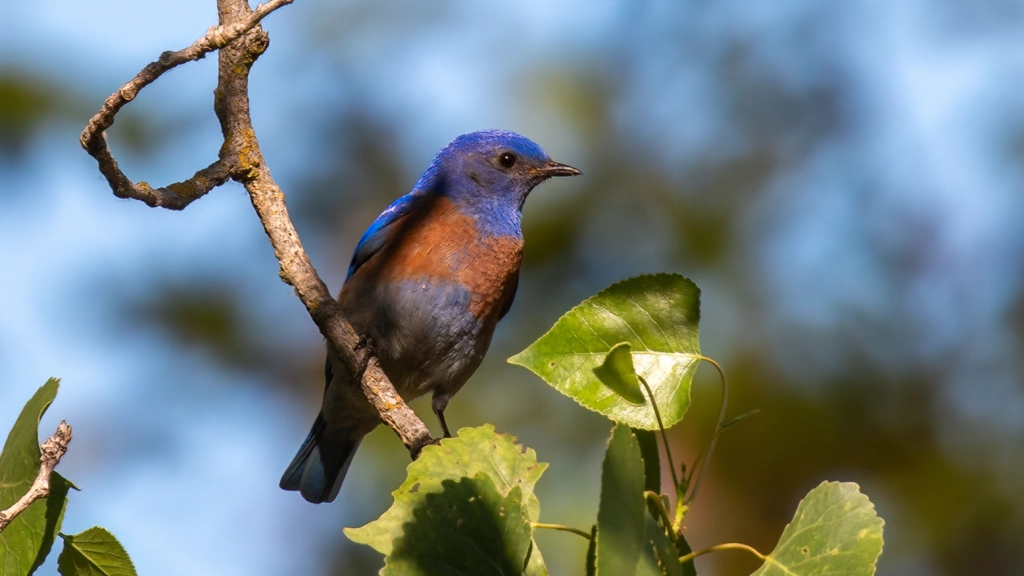
Full description and photos here.
Golden-crowned Sparrow #64/100
Every fall, people who know their birds look forward to the arrival of wintering birds, especially the wintering sparrows. The Golden-crowned Sparrow is one of those birds that’s easy to overlook unless you’re familiar with it, and once familiar, you will always enjoy the first seasonal sighting of this bird that spends its winters in the San Joaquin Valley. Diminutive with a preference for brushy margins and leaf litter, the Golden-crowned Sparrow sometimes requires a bit of searching. Once identified, it brings a reminder of the changing seasons that mark nature’s endless pattern of growth, rest, and renewal.
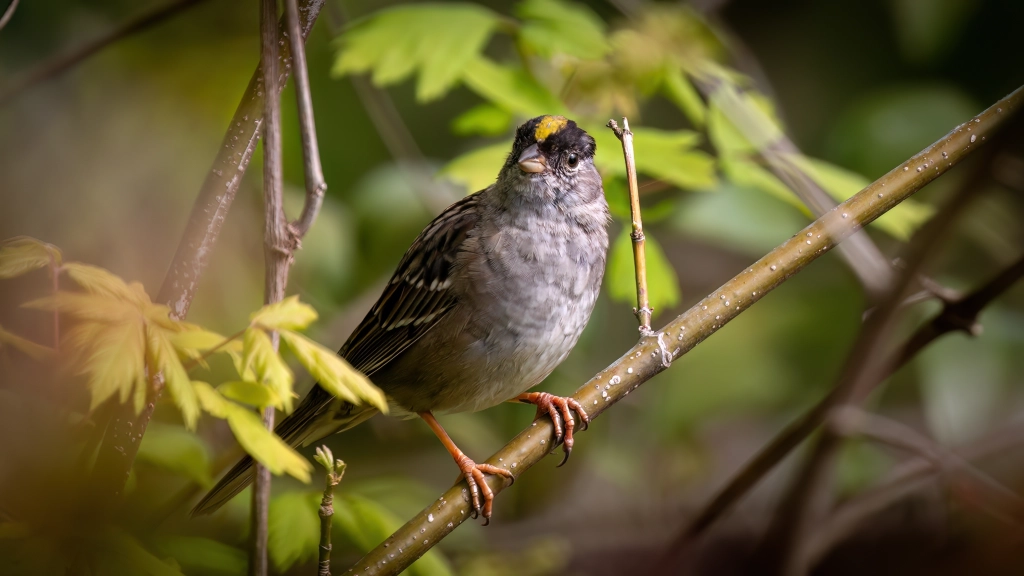
Full description and photos here.
Red-shouldered Hawk #65/100
Ordinarily found in rural riparian habitats, Red-shouldered Hawks also frequent urban settings. Their screeching calls often announce their presence before they can be seen and they’re easily confused with other raptors, especially Red-tailed, Cooper’s and Sharp-shinned Hawks. A year-round presence in the San Joaquin Valley, the Red-shouldered Hawk is another of nature’s most beautiful gifts to those who’ve learned to look for it and appreciate its spectacular visits.
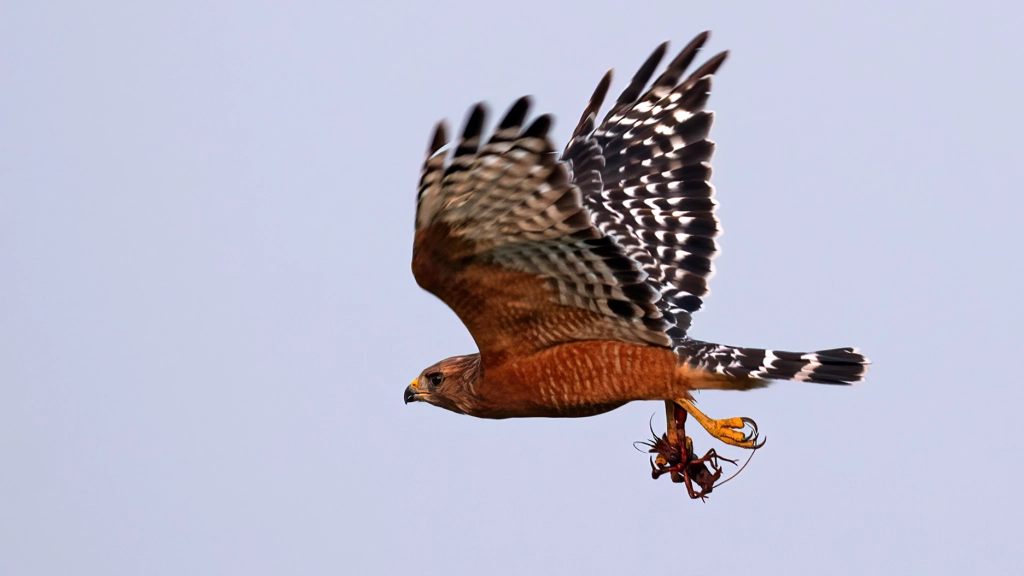
Description and more photos here.
Black-necked Stilt #66/100
A bird of the wetlands, Black-necked Stilts can also be found in flooded fields when farmers are irrigating. One of the more handsome of the multitude of waders that frequent marshy areas throughout the Valley, the Black-necked Stilt’s contrasting black and white upper- and lower-parts and red legs make it one of the easier wetland birds to identify.
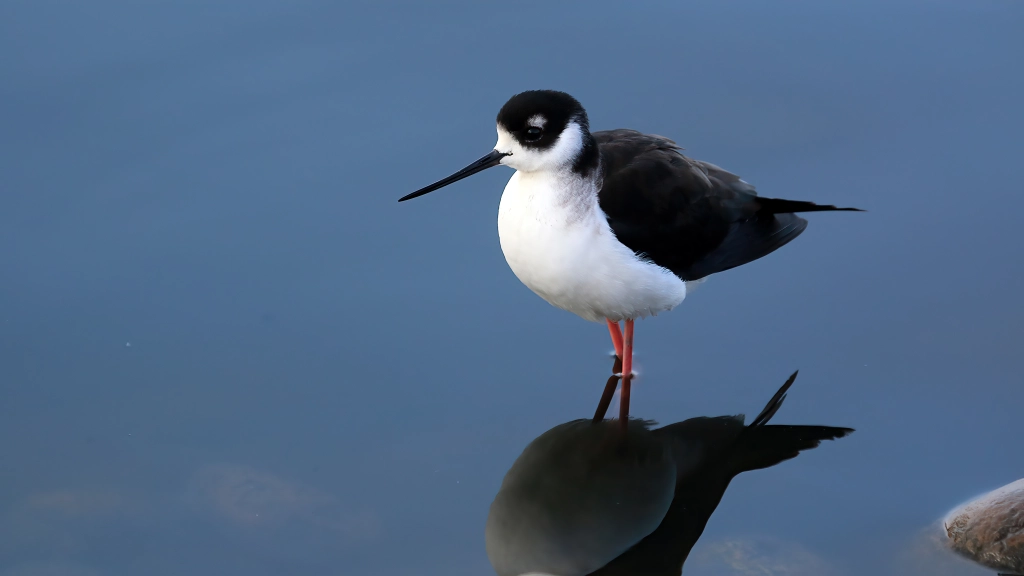
See more photos here.
Great Blue Heron #67/100
Often misidentified as a “crane” or “stork,” the Great Blue Heron is another year-round resident of the Valley’s wetlands and flooded fields. They build their large nests of twigs and sticks in the trees of our riparian forests and feed on a wide range of prey from insects, crustaceans and fish to mice and other rodents. Standing from three and a half to four feet tall and with a wingspan of five and a half to six and a half feet, the Great Blue Heron is one of our largest Valley birds.
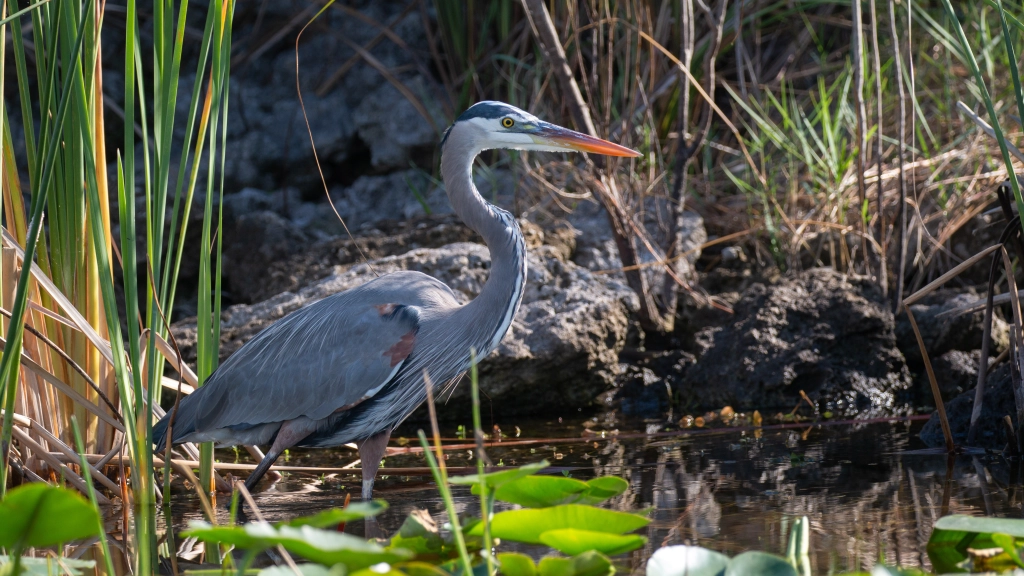
More here.

